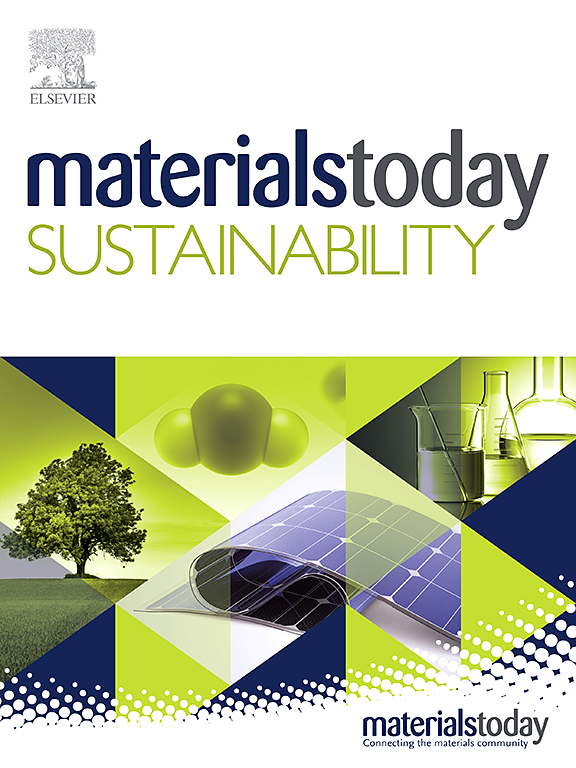Co-pyrolysis of leather shaving waste and rice husk for hybrid palladium-supported biochar catalysts in hydrogenation reactions
IF 7.9
3区 材料科学
Q1 GREEN & SUSTAINABLE SCIENCE & TECHNOLOGY
引用次数: 0
Abstract
The co-pyrolysis of tanned leather shaving waste (LS), a byproduct of the tanning industry, and rice husk (RH), an abundant agrifood residue, was performed to produce a hybrid activated biochar (ARL) to be used as support in the preparation of a Pd-based catalyst (Pd/ARL). The catalytic performance of Pd/ARL was compared with Pd/biochar catalysts derived from the pyrolysis of the individual feedstocks (Pd/ARH from rice husk and Pd/ALS from leather shaving) in the hydrogenation of benzaldehyde. Pd/ARH and Pd/ARL exhibited significantly higher initial activity, with turnover frequencies greater than Pd/ALS (1.41 s−1 and 0.58 s−1 vs. 0.09 s−1, respectively). However, Pd/ALS and Pd/ARL demonstrated superior selectivity toward the desired product, benzyl alcohol (92 and 94 % for the former and later cases, respectively, vs. 78 % for Pd/ARH), effectively suppressing side reactions such as benzaldehyde acetalization with ethanol. Chemical and physical characterization of the biochars and catalysts revealed that Pd/ARL benefits from the synergistic properties of both feedstocks, including enhanced metal anchoring, high dispersion, and unique oxidation states. These factors contributed to the best overall catalytic performance, increasing the yield of desired products by up to 96 %. This research disclosed a novel strategy for the fabrication of cost-effective catalytic supports from waste materials aimed at modulating the hydrogenation reactions selectivity.

混合钯负载生物炭催化剂在加氢反应中的共热解
以制革工业副产品鞣革剃须废料(LS)和丰富的农业食品残渣稻壳(RH)为原料,进行共热解制备混合活性生物炭(ARL),作为制备Pd基催化剂(Pd/ARL)的载体。比较了Pd/ARL与Pd/生物炭催化剂在苯甲醛加氢反应中的催化性能,这些催化剂分别来自稻壳中的Pd/ARH和皮革剃毛中的Pd/ALS。Pd/ARH和Pd/ARL的初始活性显著高于Pd/ALS(分别为1.41 s−1和0.58 s−1,分别为0.09 s−1)。然而,Pd/ALS和Pd/ARL对期望产物苯甲醇的选择性较好(前者和后者分别为92%和94%,而Pd/ARH为78%),有效抑制了苯甲醛与乙醇的缩醛化等副反应。生物炭和催化剂的化学和物理表征表明,Pd/ARL受益于两种原料的协同特性,包括增强的金属锚定性、高分散性和独特的氧化态。这些因素促成了最佳的整体催化性能,将期望产品的收率提高了96%。本研究揭示了一种利用废弃物制备具有成本效益的催化剂载体的新策略,旨在调节加氢反应的选择性。
本文章由计算机程序翻译,如有差异,请以英文原文为准。
求助全文
约1分钟内获得全文
求助全文
来源期刊

Materials Today Sustainability
Multiple-
CiteScore
5.80
自引率
6.40%
发文量
174
审稿时长
32 days
期刊介绍:
Materials Today Sustainability is a multi-disciplinary journal covering all aspects of sustainability through materials science.
With a rapidly increasing population with growing demands, materials science has emerged as a critical discipline toward protecting of the environment and ensuring the long term survival of future generations.
 求助内容:
求助内容: 应助结果提醒方式:
应助结果提醒方式:


